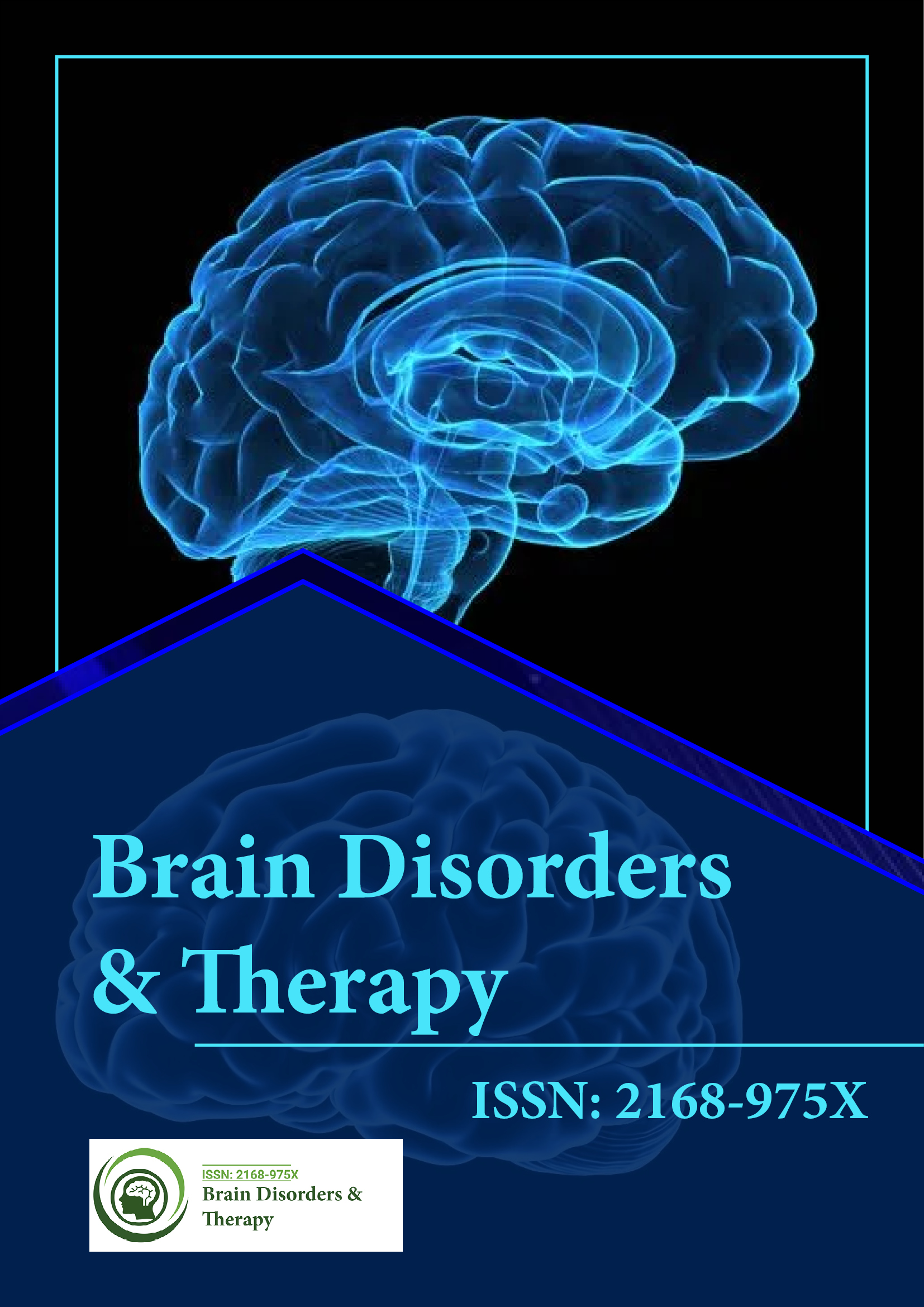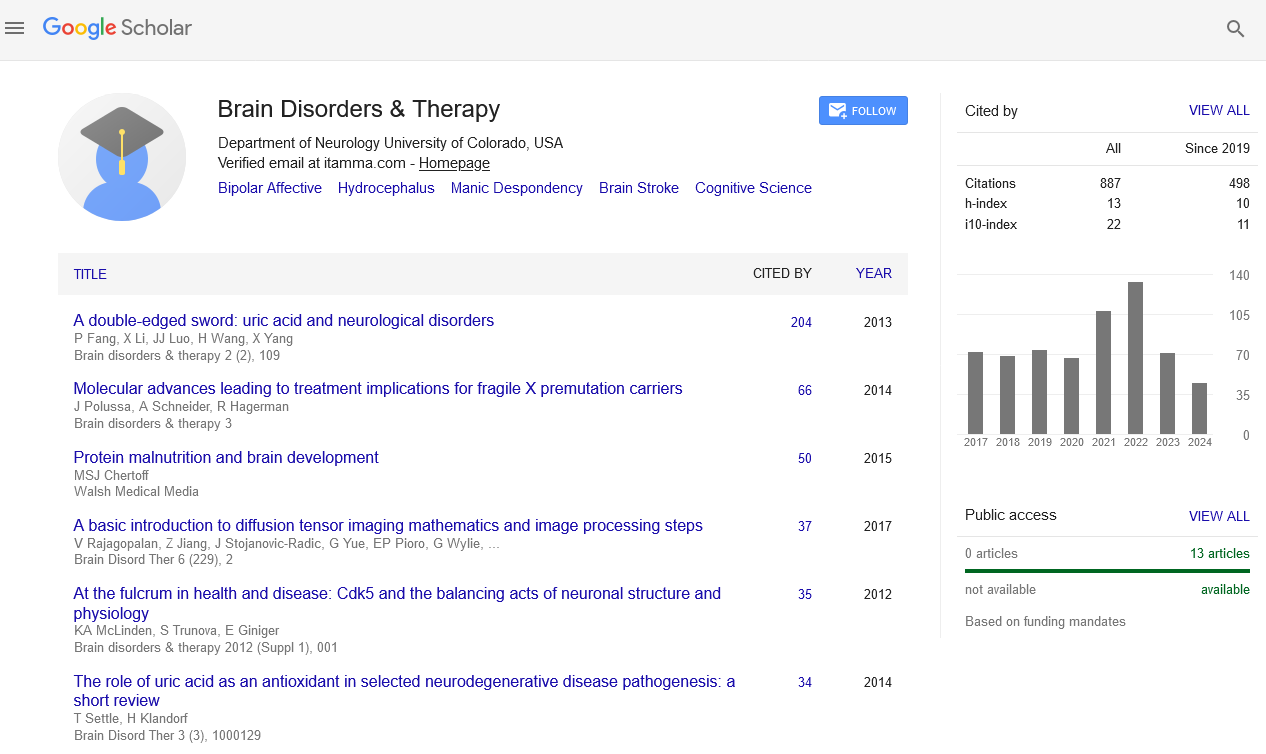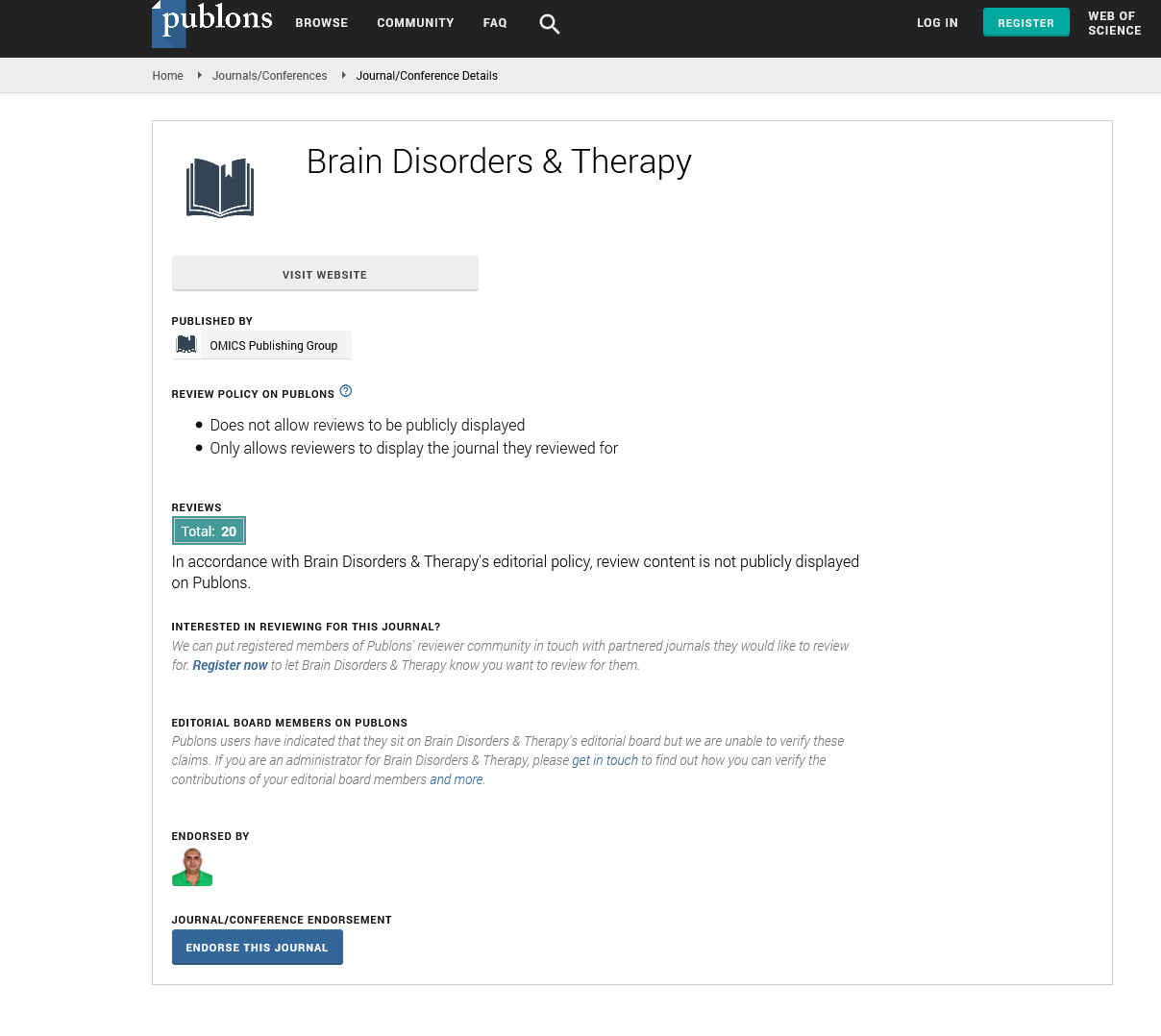Indexed In
- Open J Gate
- Genamics JournalSeek
- JournalTOCs
- RefSeek
- Hamdard University
- EBSCO A-Z
- OCLC- WorldCat
- Publons
- Geneva Foundation for Medical Education and Research
Useful Links
Share This Page
Journal Flyer

Open Access Journals
- Agri and Aquaculture
- Biochemistry
- Bioinformatics & Systems Biology
- Business & Management
- Chemistry
- Clinical Sciences
- Engineering
- Food & Nutrition
- General Science
- Genetics & Molecular Biology
- Immunology & Microbiology
- Medical Sciences
- Neuroscience & Psychology
- Nursing & Health Care
- Pharmaceutical Sciences
Opinion Article - (2025) Volume 14, Issue 1
Mesenchymal Stem Cells as a Regenerative Strategy for Traumatic Brain Injury
Jacob Steiner*Received: 19-Feb-2025, Manuscript No. BDT-25-28916; Editor assigned: 21-Feb-2025, Pre QC No. BDT-25-28916 (PQ); Reviewed: 07-Mar-2025, QC No. BDT-25-28916; Revised: 14-Mar-2025, Manuscript No. BDT-25-28916 (R); Published: 21-Mar-2025, DOI: 10.35248/2168-975X.25.14.293
Description
Traumatic Brain Injury (TBI) continues to pose a significant global health challenge due to its complex nature and long-term consequences. Despite advancements in neuro-critical care, the therapeutic options for TBI remain largely supportive, with no definitive curative interventions. In recent years, Mesenchymal Stem Cell (MSC)-based therapies have gained traction as a potential treatment approach, offering the possibility of addressing not only the primary injury but also the cascade of secondary pathophysiological events that exacerbate brain damage. From a clinical and scientific perspective, the integration of MSC-based therapy into TBI management deserves serious attention and timely advancement.
TBI is not a singular event but a dynamic condition with primary and secondary phases. The primary injury, caused by mechanical impact, leads to immediate damage such as axonal shearing, contusion and hemorrhage. This is followed by secondary injury mechanisms, including neuroinflammation, excitotoxicity, oxidative stress, mitochondrial dysfunction and disruption of the blood-brain barrier. These processes contribute to neuronal loss, glial activation and impaired neurovascular function, ultimately impeding functional recovery. It is this intricate progression of secondary injuries that has made TBI particularly resistant to traditional pharmacologic interventions.
Mesenchymal stem cells offer a unique opportunity to interrupt these pathological cascades. Derived from various sources such as bone marrow, adipose tissue and umbilical cord, MSCs are characterized by their immunomodulatory, anti-inflammatory and neuroprotective properties. Unlike embryonic stem cells, they pose fewer ethical concerns and exhibit low immunogenicity, making them suitable candidates for allogeneic transplantation. Additionally, MSCs can be administered via various routes, including intravenous, intrathecal and even intranasal delivery, which add to their clinical feasibility.
One of the most compelling aspects of MSCs in TBI treatment is their ability to home to injury sites and secrete a wide range of trophic factors. These include Brain-Derived Neuro-Trophic Factor (BDNF), nerve growth factor (NGF) and Vascular Endothelial Growth Factor (VEGF), which promote neuronal survival, angiogenesis and synaptic plasticity. MSCs have also been shown to modulate the immune response by shifting microglial activation from a pro-inflammatory (M1) to an anti-inflammatory (M2) phenotype. This modulation is critical in reducing the prolonged neuroinflammation that contributes to chronic neurodegeneration following TBI.
Despite encouraging preclinical data, the translation of MSC-based therapies to clinical settings has been cautious. Several early-phase clinical trials have demonstrated the safety and tolerability of MSC administration in TBI patients, with some studies suggesting modest improvements in neurological function and quality of life. However, challenges remain. These include optimizing the timing of administration, cell dosage, route of delivery and ensuring the survival and integration of transplanted cells. Additionally, the heterogeneity of TBI in terms of severity, location and individual patient response complicates the design of standardized treatment protocols.
There is also a need to address the mechanisms by which MSCs exert their therapeutic effects. While the initial focus was on cell replacement, it is now widely accepted that paracrine signaling plays a dominant role. This insight has led to investigations into the use of MSC-derived Extracellular Vesicles (EVs) as a cell-free therapeutic alternative. EVs retain the beneficial bioactive molecules of their parent cells while avoiding the risks associated with cell transplantation, such as ectopic tissue formation or embolism. The development of EV-based therapies may overcome some of the logistical and safety challenges inherent to cell-based approaches.
Another area deserving attention is the integration of MSC therapy with existing neuro-rehabilitation strategies. Emerging evidence suggests that combining cell therapy with physical and cognitive rehabilitation may enhance neuroplasticity and functional outcomes. Personalized medicine approaches, leveraging patient-specific factors and biomarkers, could further refine therapeutic efficacy.
In conclusion, traumatic brain injury is a multifaceted condition with far-reaching consequences for individuals and healthcare systems alike. While no single intervention will offer a universal cure, the evolving field of MSC-based therapy holds genuine potential for improving long-term outcomes. By continuing to resolve the pathophysiological complexities of TBI and harnessing the regenerative potential of stem cells, we may finally be on the cusp of a new era in neuro-trauma treatment.
Citation: Steiner J (2025). Mesenchymal Stem Cells as a Regenerative Strategy for Traumatic Brain Injury. Brain Disord Ther. 14:293.
Copyright: © 2025 Steiner J. This is an open access article distributed under the terms of the Creative Commons Attribution License, which permits unrestricted use, distribution, and reproduction in any medium, provided the original author and source are credited.


